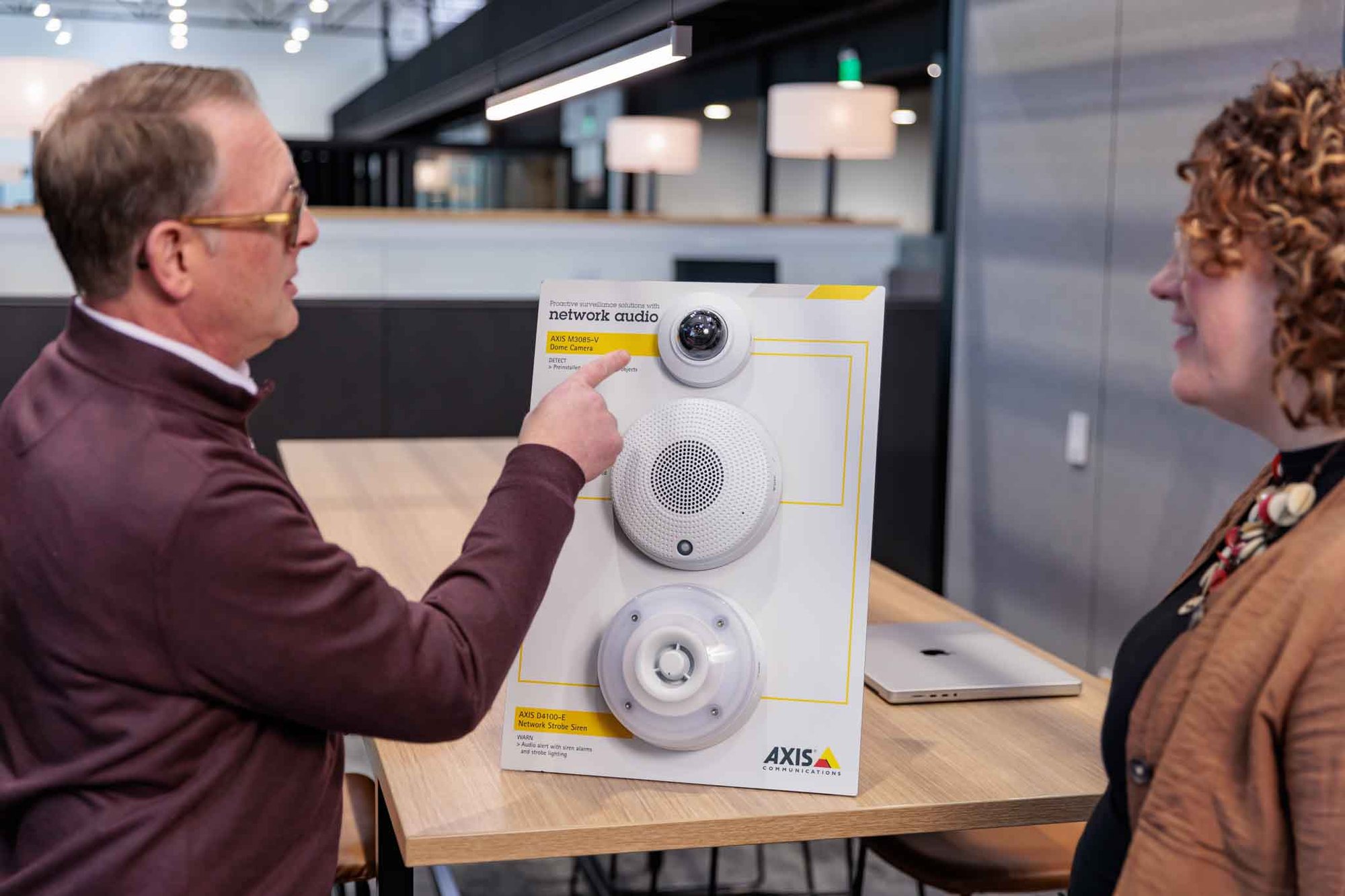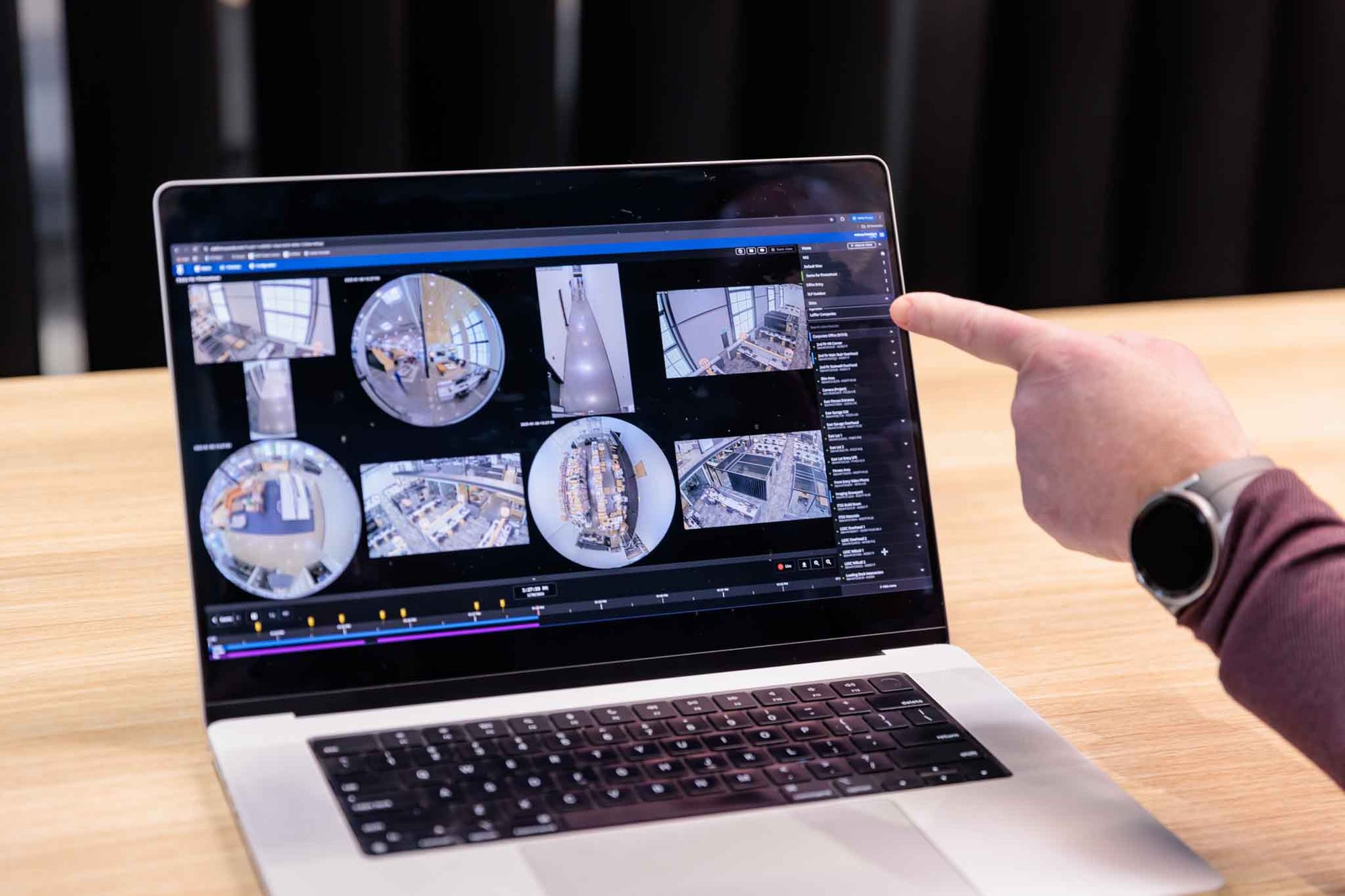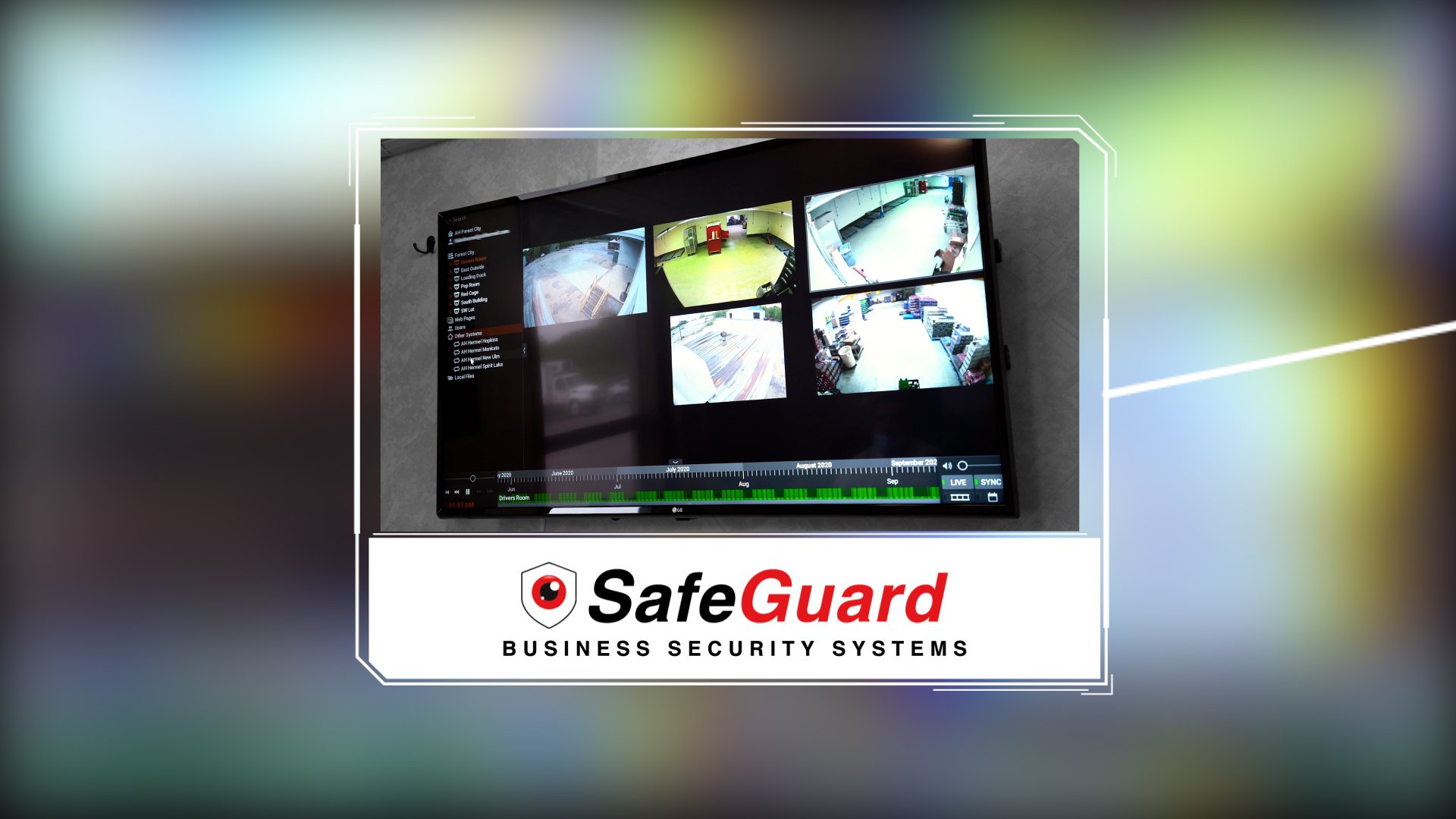Business Security Systems
Protect Your Company and Your Peace of Mind
Loffler understands the importance of safeguarding your business. That’s why we offer comprehensive business security solutions to ensure your operations run smoothly, even in the face of unexpected challenges.
No matter what your business is, Loffler’s advanced business security systems are designed to provide robust protection, seamless recovery, and peace of mind, allowing you to focus on what matters most—growing your business.
All Types of Security for Any Kind of Business
Video Surveillance
Video can be stored redundantly on-premise and in the cloud with secure remote access.
Access Control
A wide variety of physical security access control systems with multi-location, single pane of glass login.
Remote Monitoring
Event monitoring, virtual guard tours, virtual escorts, and virtual gatekeeping.

Benefits of a Business Security System
Whether you run a small or enterprise business, a top-class security system is vital to your success and allows everyone in the office to focus on getting important work done. Some of the most prominent benefits include:
- Enhancing safety and security to protect your property and assets.
- Deterring criminal activity, reducing theft and vandalism threats.
- Improving accident response can quickly address and resolve security incidents.
- Managing risk to lower liability
How Much Does a Business Security System Cost?
Check out this video to learn about the factors that affect the cost of an office security system.
Loffler's Physical Security Practice Manager explains the three categories that make a business security system and how they can influence the overall cost.
Unlocking Advanced Security with Loffler’s Safeguard Solutions
Loffler Safeguard offers a comprehensive managed physical security program, combining Video Surveillance as a Service (VSaaS) with Hardware as a Service (HaaS). This innovative solution provides businesses with an affordable and accessible entry point to advanced video surveillance technology.
Loffler Simplifies Security Choices
From cameras to remote location viewing, access control, alarms, cybersecurity, wireless and cloud-based solutions, and more, when you are selecting a security system for your business, it’s crucial to consider features that ensure comprehensive protection and peace of mind. Here are the most important features to look for:
Security Cameras
High-definition cameras with night vision and motion detection provide continuous monitoring and deter potential intruders.
Storage
Reliable storage solutions, including cloud-based options, ensure that surveillance footage is securely stored and easily accessible when needed.
Alarms & Notifications
Intrusion alarm systems and real-time security notifications alert you to unauthorized access or suspicious activities at your business, enabling prompt response.
Secure Mobile Access
The ability to monitor and control your security system remotely via mobile devices ensures you stay informed and in control no matter the time or location.
Access Control
Systems that manage who enters and exits your premises, including keycard or biometric access, enhance security and track movements.
Cybersecurity
Protecting your digital assets is as important as physical security. Ensure your system includes features to safeguard against cyber threats.

Analytics
Advanced analytics provide insights into security events, helping you identify patterns and improve overall security measures.
Management
User-friendly management interfaces allow for easy configuration and monitoring of your security system.
Cloud-Based Security Systems
Cloud-based security camera systems for business offer scalability, remote access, and seamless integration with other security features, creating a robust and flexible security infrastructure.
I can basically see the entire company anytime I want, 24/7. It allows me to have instant access, instant view of every operation I have. My go-to method though is via my iPhone, which I can take anywhere, anytime.View Case Study
Let's Talk About Business Security Systems
Explore More Insights

Why Cyber Insurance Now Demands Better Security
Cyber insurance used to be simple. A few forms, a small premium, and you were covered against the financial fallout of ...
Modern Cyber Threats and How to Stay Ahead of Them
If you feel like cybersecurity is a never-ending game of catch-up, you’re not alone. The threat landscape is evolving ...




